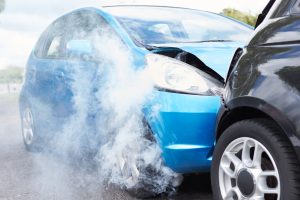What comes to your mind when you hear the term “full coverage car insurance?” If you are like most people, you probably think about an auto insurance policy that ensures you have full protection no matter what may happen to you and your car. But is that the case? The simple answer is “no.”
If you make this assumption and are involved in a fatal crash, you may find yourself in a tough situation that you didn’t expect. Full coverage car insurance can be confusing at best and misleading at worst.
Furthermore, you need to know that not all car insurance companies sell full coverage policies, and even those that do are only bundling optional coverages on top of a basic policy. Their primary objective is to sell you enough policies to cover the most common types of auto accidents and incidents.
That is absolutely fine as long as you are fully aware of what you are buying and how you are covered in case of an accident.
So, what is full coverage car insurance, and how does it work? Read on to find out everything you need to know.
What Is Full Coverage Policy?
Full coverage car insurance is not a product in itself but a car insurance policy that bundles together several policies to provide you and your car with enhanced protection from accidents and other forms of damage.
A full coverage includes much more than the minimum coverage limits required by your state law. In most cases, the additional coverage limits you obtain will be in line with your current financial situation.
Typically, the state-required minimum coverage is only meant to compensate for damage you cause to other people in case of an accident.

A full coverage car insurance mostly includes comprehensive, liability, and collision coverage. Collision and comprehensive policies are designed to protect you and your car if you are involved in an accident regardless of who was at fault.
If you are found to be at fault in an accident, the liability part of your policy will pay for damages you might cause to the other parties involved in the accident.
A full coverage policy helps provide the best possible protection, but you will still be required to pay your deductible if you are involved in a crash.
What Are the Key Components of Full Coverage Policy?
Since full coverage car insurance isn’t a type of policy, it technically doesn’t cover anything. Instead, the package you purchase will most likely be a bundle of different types of car insurance policies. These include:
1. Comprehensive Insurance
Comprehensive insurance is designed to cover any damage to your car unrelated to a collision, such as vandalism, theft, or storm damage.
However, you need to remember that comprehensive insurance doesn’t necessarily cover all types of damage to your car. Some companies specifically don’t cover damage caused by certain types of disasters, such as flooding.
If you want to purchase comprehensive insurance for your car and discover it is so expensive for your budget, consider raising your deductible to lower your rate.
2. Liability Coverage
Liability coverage is mandatory in most states across the country and mainly includes two critical components: property damage and bodily injury.
If you are involved in an accident, and you are at fault, your state’s laws may permit the other parties involved in the crash to sue you for damages or injuries exceeding your liability policy limits.
That is why full coverage car insurance will most likely increase your liability coverage limits to provide much more protection in exchange for an increase in your premiums.
3. Collision Coverage
Since liability coverage doesn’t cover damage to your car if you are at-fault in an accident, you need collision coverage.
Sometimes it may be tempting to skip this coverage, especially if you are on a tight budget but should you be involved in an accident and your car is damaged, you may be on the hook for repairs or replacement, which will cost you more money than what you’d have paid in premiums.

You can keep your collision coverage limits low by driving an inexpensive car and maintaining a clean driving record. These two factors show your insurance company that it won’t be on the hook for a large auto repair bill and that you are less likely to cause an accident.
You can also reduce your premium significantly by increasing your deductible. The term “deductible” refers to the amount of money you pay out of pocket before your auto insurance policy kicks in and starts to cover you.
What Does Full Coverage Car Insurance Pay For?
When you have full coverage car insurance, it will typically pay for any damage you cause to others up to your policy limits, damage to your own car up to its fair market value, damage due to a natural disaster or theft, and injuries to you and your passengers in case you are involved in an accident with an uninsured/underinsured motorist.
It will also cover you if you are at fault in an accident by paying the medical treatment for you and your passengers. However, you need to be fully aware of your policy limits to avoid running into trouble with your insurer.
What Does Full Coverage Car Insurance Not Cover?
If you ever thought that full coverage means covering everything and anything, you are wrong. Typically, full coverage doesn’t cover damage due to street racing or off-road driving.
It also doesn’t cover intentional damage, destruction to your car or confiscation by government authorities, business use of the car for delivery purposes, or use of the car in a car-sharing or pooling program.

Additionally, full coverage excludes glass coverage, gap insurance, umbrella insurance, custom equipment coverage, rideshare insurance, and roadside assistance.
How Much Does Full Coverage Cost?
The cost of full coverage car insurance varies widely from state to state and depends on a lot of individual factors such as driving history, credit score, ZIP code, age, make, and model of your car.
However, you can still look at the average costs as a base guideline for what many motorists tend to pay for full coverage insurance.
According to a 2021 report from the National Association of Insurance Commissioners, the average cost of full coverage in the United States is approximately $1,200 per year or $100 per month.

The average cost of liability coverage is $645, while collision coverage stands at $378. The average cost of comprehensive coverage is $170.
But we must insist that the average costs mentioned above can only tell you so much. The truth is that the cost of full coverage car insurance heavily depends on the individual factors we mentioned above as well as the coverage limits you choose.
Who Needs Full Coverage Car Insurance?
Anyone can purchase a full coverage policy, but it is more suited for some individuals than others. For instance, if you still have a loan on your car or driving a leased vehicle, purchasing full coverage makes sense.
This is because you don’t technically own the car, and the bank that financed your purchase or lease wants to ensure they are fully compensated should something unfortunate happen to the car.
In fact, most car financing contracts make it mandatory for the car buyer to maintain a certain level of insurance coverage which is usually way more than the state-mandated minimums.

If you are still making a monthly payment on your car, make sure you read the contract carefully to see if you are required to carry full coverage.
Beyond that, full coverage car insurance is optional. If being at fault in an accident would cripple you financially, full coverage car insurance is worth considering. However, if you have solid liability coverage and your car isn’t worth a lot of money, you don’t need to worry much about it.
How Can I Buy Full Coverage Car Insurance Policy?
It is relatively easy to purchase a full coverage car insurance policy. Most auto insurance companies sell these policies or a bundle of policies that still provide what most of us call full coverage. A good starting point would be contacting your current auto insurance provider to see if they offer such plans.

